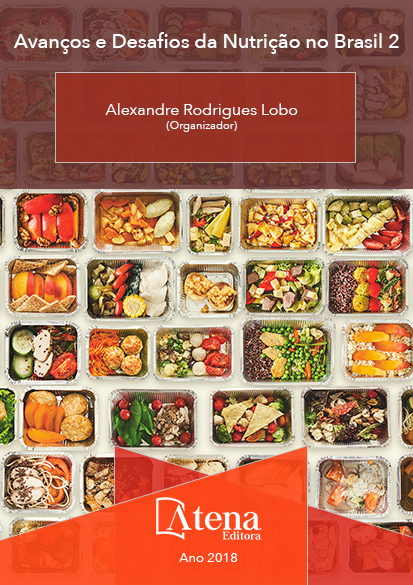
PREVALÊNCIA DE EXCESSO DE PESO E SUA ASSOCIAÇÃO COM O CONSUMO ALIMENTAR EM CRIANÇAS DE UMA CRECHE PÚBLICA NO MUNICÍPIO DE RIO DAS OSTRAS
Com uma participação cada vez
maior da mulher no mercado de trabalho,
há a necessidade de instituições em que as
mães possam deixar seus filhos enquanto
estão fora de casa. Tal papel é cumprido pelas
creches e escolas de educação infantil, que
são responsáveis também pela alimentação
das crianças durante sua permanência na
instituição. É grande a responsabilidade
desses locais sobre o estado nutricional dessas
crianças; por isso esta pesquisa teve como
objetivos investigar a prevalência de excesso
de peso e sua associação com o consumo
alimentar em crianças de uma creche pública
no município de Rio das Ostras. As crianças
analisadas neste estudo tiveram suas massas
corporais e estaturas/comprimento aferidas
para a obtenção do IMC (Índice de Massa
Corporal), que foi aplicado às curvas de
crescimento da OMS (2006-2007) e classificado
de acordo com os parâmetros estabelecidos
pela OMS (2006) por meio do programa WHO
ANTHRO, como também foi aplicado aos pais
e/ou responsáveis um questionário de consumo
alimentar e condição socioeconômica.
PREVALÊNCIA DE EXCESSO DE PESO E SUA ASSOCIAÇÃO COM O CONSUMO ALIMENTAR EM CRIANÇAS DE UMA CRECHE PÚBLICA NO MUNICÍPIO DE RIO DAS OSTRAS
-
DOI: 10.22533/at.ed.94918021222
-
Palavras-chave: antropometria; avaliação nutricional; obesidade infantil.
-
Keywords: Atena
-
Abstract:
With an increasing participation
of women in the labor market, there is a need
for institutions where mothers can leave their
children while they are away from home. This
role is fulfilled by kindergartens and preschools,
which are also responsible for feeding children
during their stay in the institution. It is the
responsibility of those great places on the
nutritional status of these children, so this study
was to investigate the prevalence of overweight
and its association with dietary intake in children
from a day care center in the municipality of the
Oyster River. Children who will be analyzed in
this study have their body masses and heights /
length measured to obtain the BMI (Body Mass
Index) which will be applied to the growth curves
of WHO (2006-2007) and classified according
to the parameters established by WHO (2006)
WHO ANTHRO through the program, but can
also be applied to parents and / or guardians
a questionnaire of food consumption and
socioeconomic status.
-
Número de páginas: 15
- Aline Valéria Martins Pereira


